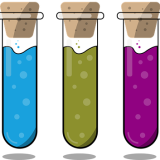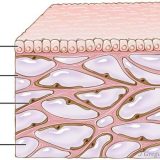Low Carb and the Glycemic Index— Your Guide to Your New Way of Eating
For decades it has always been about simple (table sugar) and complex (whole grains) carbohydrates. The problem with that concept is if you consume a peeled boiled potato you will digest more sugars than table sugar! With that said, let’s introduce the Glycemic Index (GI). GI is the rate in which sugars (glucose) are released into the blood stream. Glucose needs to get into the cell for energy via the bloodstream, insulin is the handle that opens the door. If there is too much insulin in the bloodstream the blood never clears of sugars thus creating high blood pressure, collapsed veins, various veins basically to much strain on the bloodstream. High glycemic foods raises the blood sugar level increased over the amount necessary to perform a task but the foods that contain low glycemic levels will only raise it a little thus allowing the body to perform the desired task without the influx of sugar in the blood stream and clearing the blood of sugars so the vessels do not become damaged.
With this new food guide, you will be able to prevent heart disease, improve cholesterol levels, prevent insulin resistance and type2 diabetes, prevent certain cancers, and achieve desired healthy weight. With extensive research that has gone into this blog, please read careful because this link has been sent to you because you qualify for this new food guide and should not be altered or you will defeat the purpose and your body will not undergo the change in which you need to achieve your goals.
Carbohydrate-rich foods:
Starches (grains: wheat, barley, rice); Legumes (split peas, lentils, pinto, black .. beans), Starchy Vegetables ( potato, winter squash, yams). Sugars found in fruits and dairy products or packaged sweeteners. Fiber is an exception, it is the indigestible part of carbohydrates thus it does not raise blood glucose levels. Insulin is a hormone triggered when sugar is in the bloodstream. This is important for those who do not stick to low fat menus, mostly everyone, remaining glucose in the blood is stored in the muscles and liver. Extra glucose is stored as fat around the muscles and organs. So, the more high glycogen containing foods you consume remember it will be stored in the liver since the fat is stored in the liver this prolong situation will cause high triglycerides, high levels of LDL (bad) cholesterol, lower the levels of HDL (good) cholesterol and create high blood pressure; furthermore, it will create insulin resistance, increase your appetite (studies show it is around 700 calories more), of course obesity, and cause risk of type 2 diabetes as well as macular degeneration (blindness), certain cancers, breast cancer, prostate and colorectal cancer.
Not a client and want a Free Fitness or Nutrition Consult (value $87) or
interested in our Personal Training Services click here or call us 901-466-6242.
Check out our customized online training ($40-$80) here: Online Customized Training
Interested in our Massage or Body Wraps? Click here.




